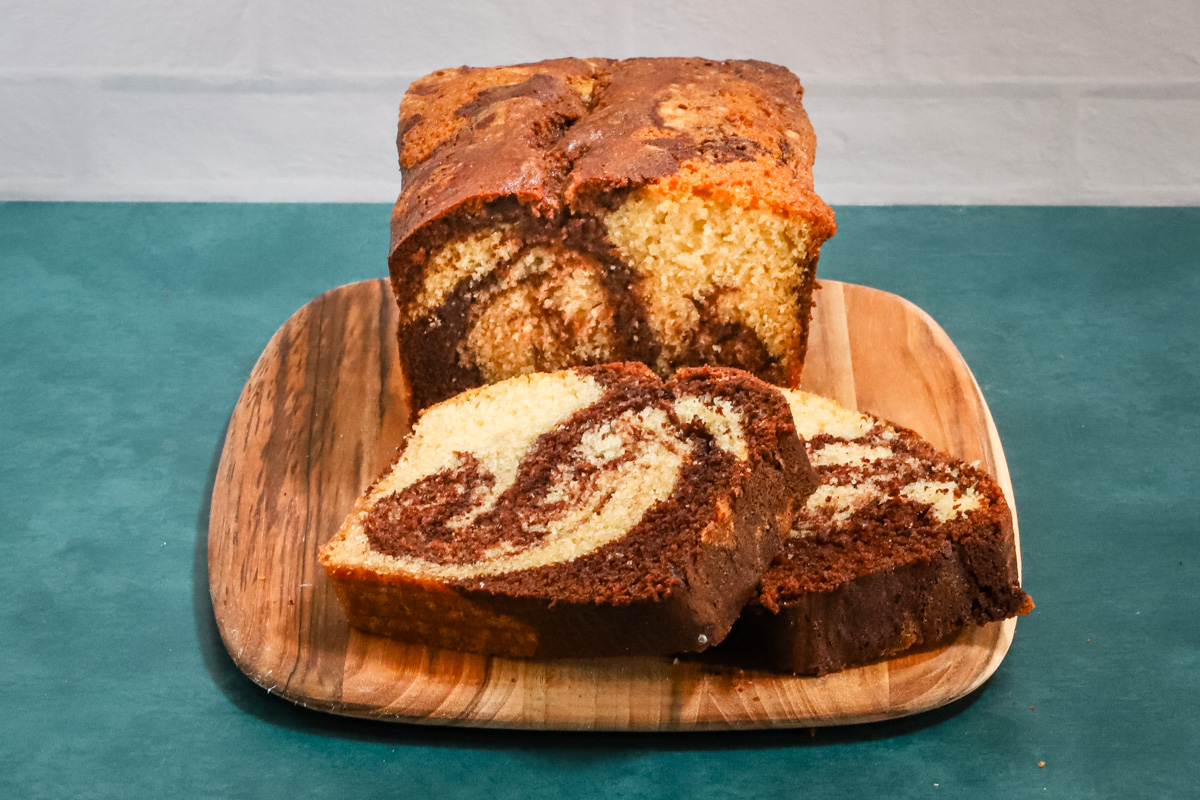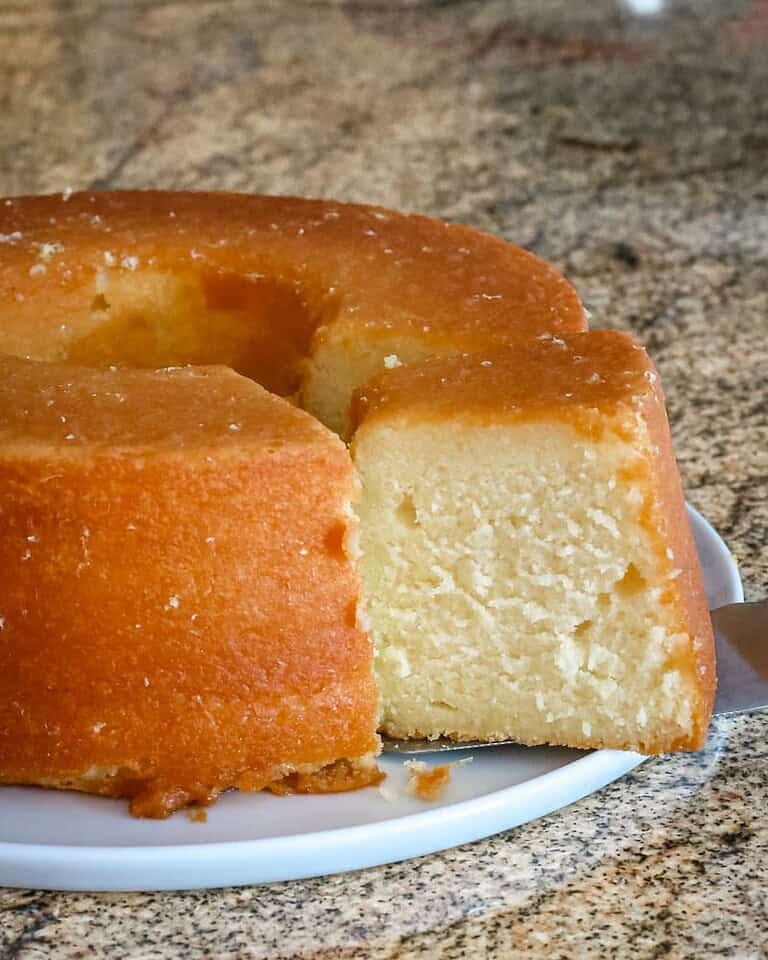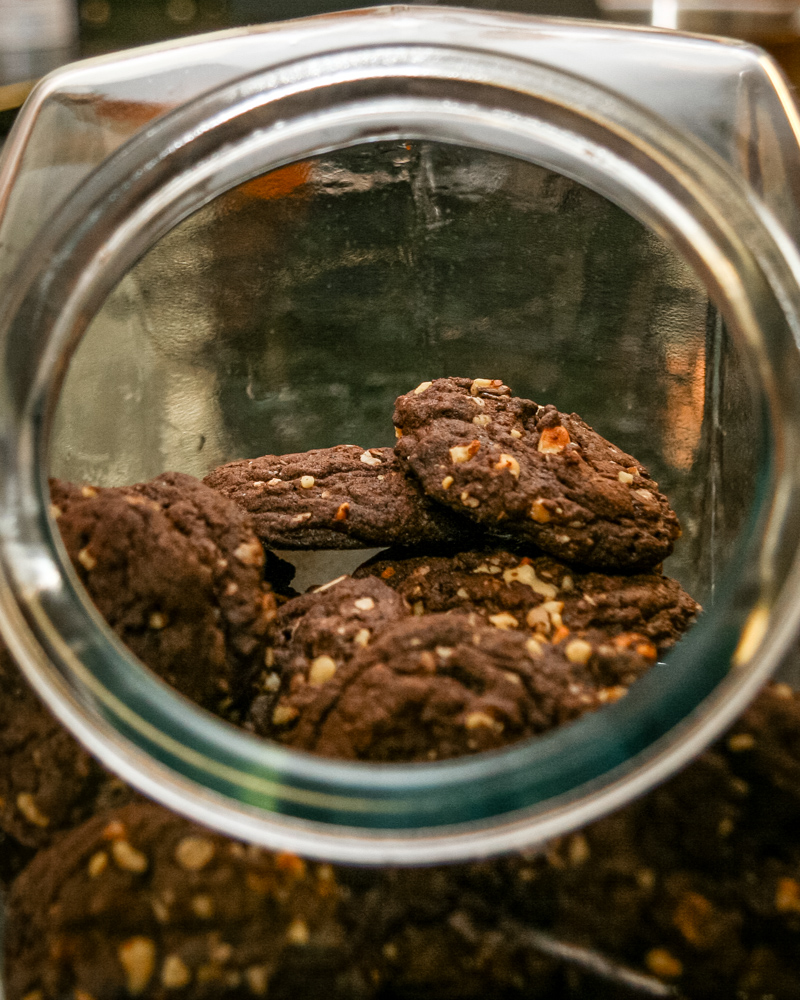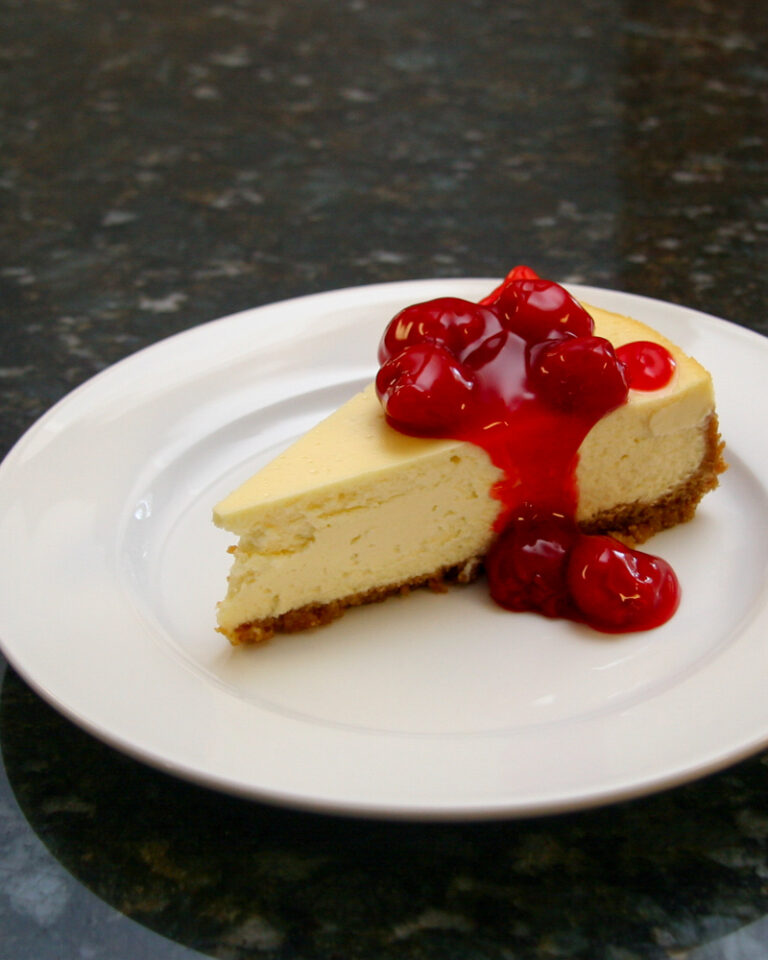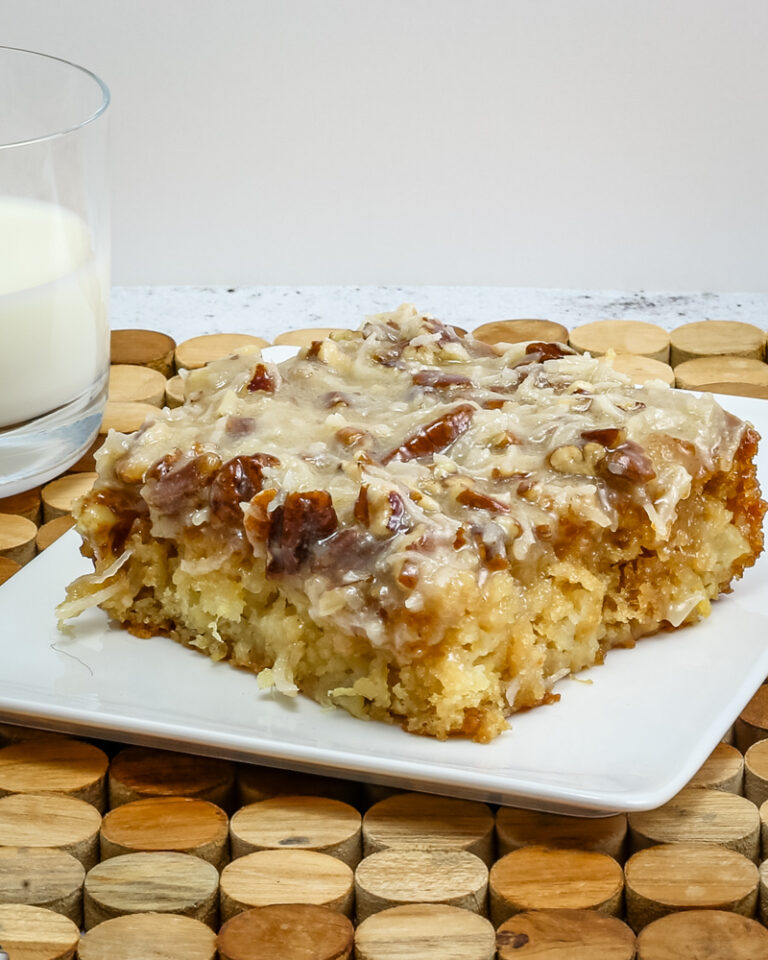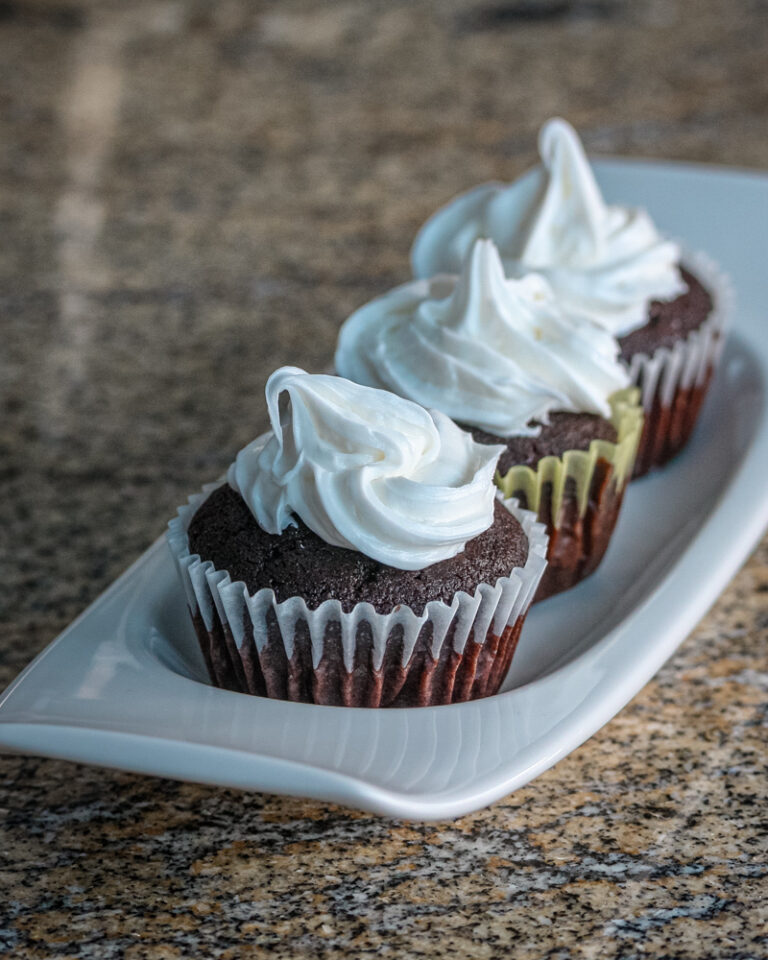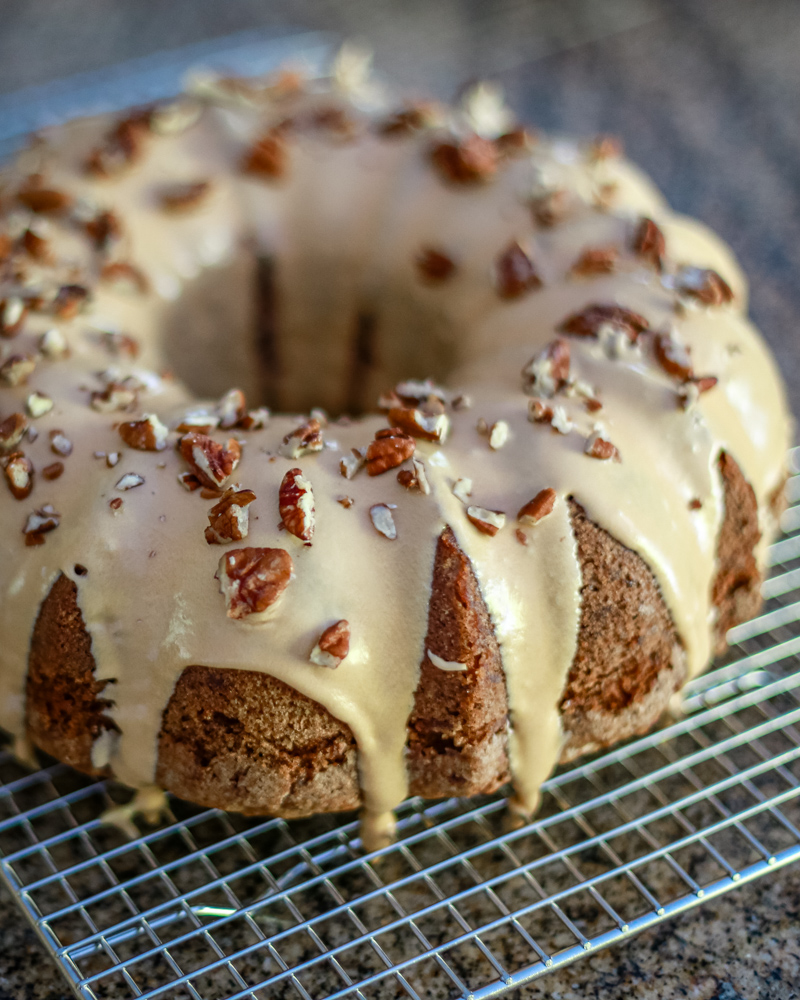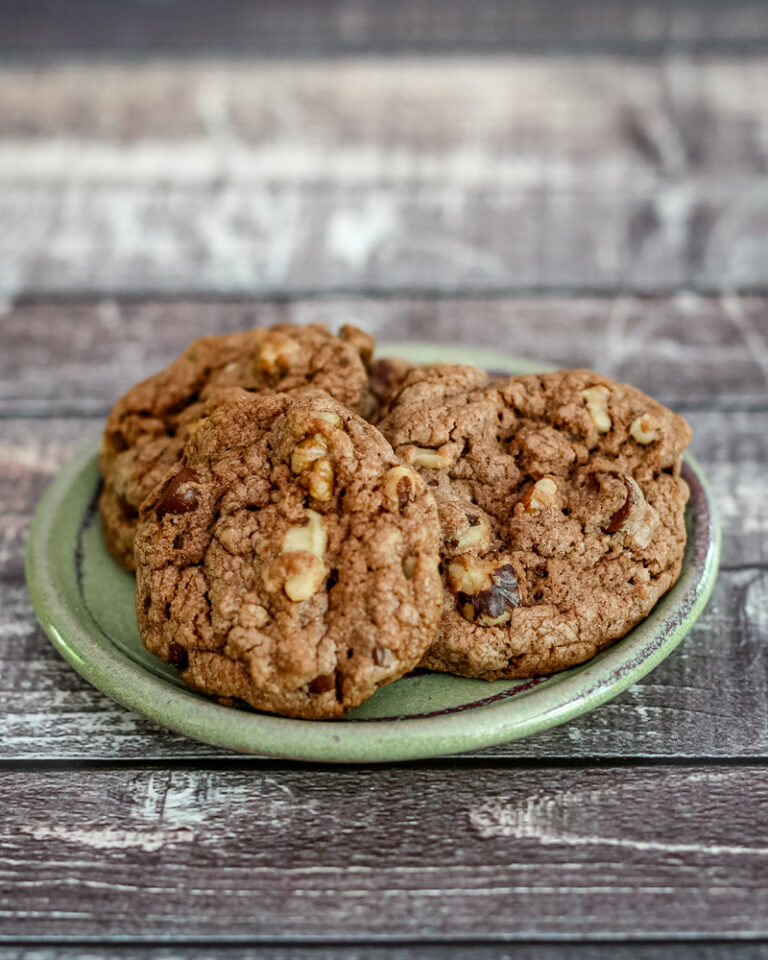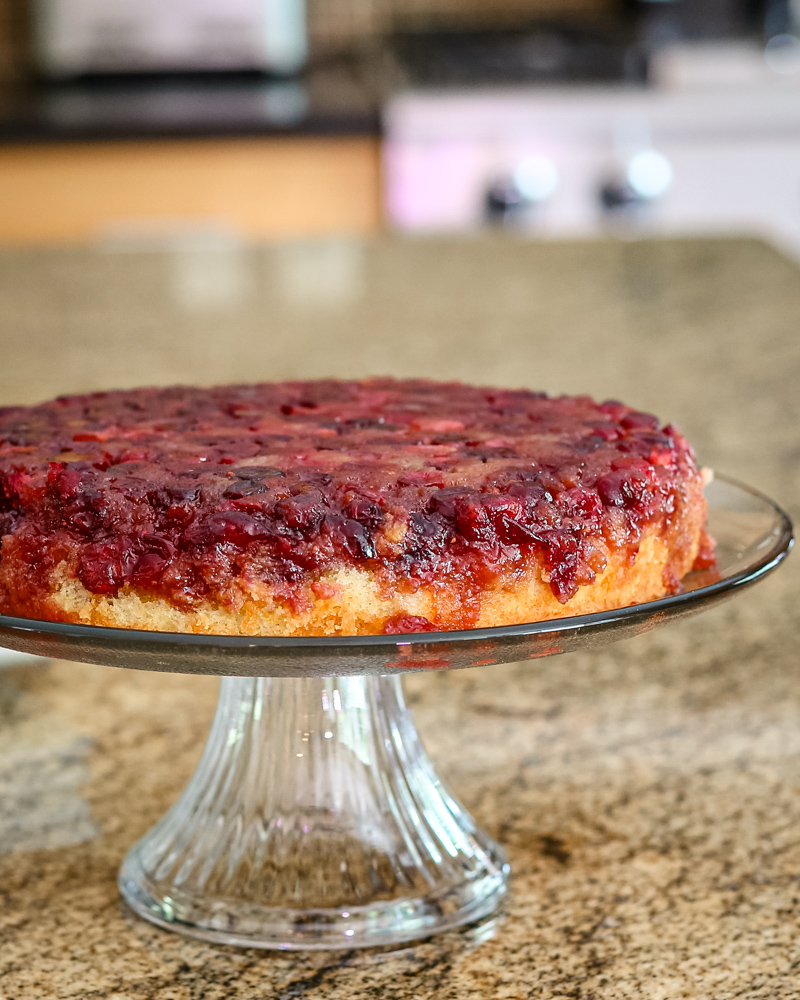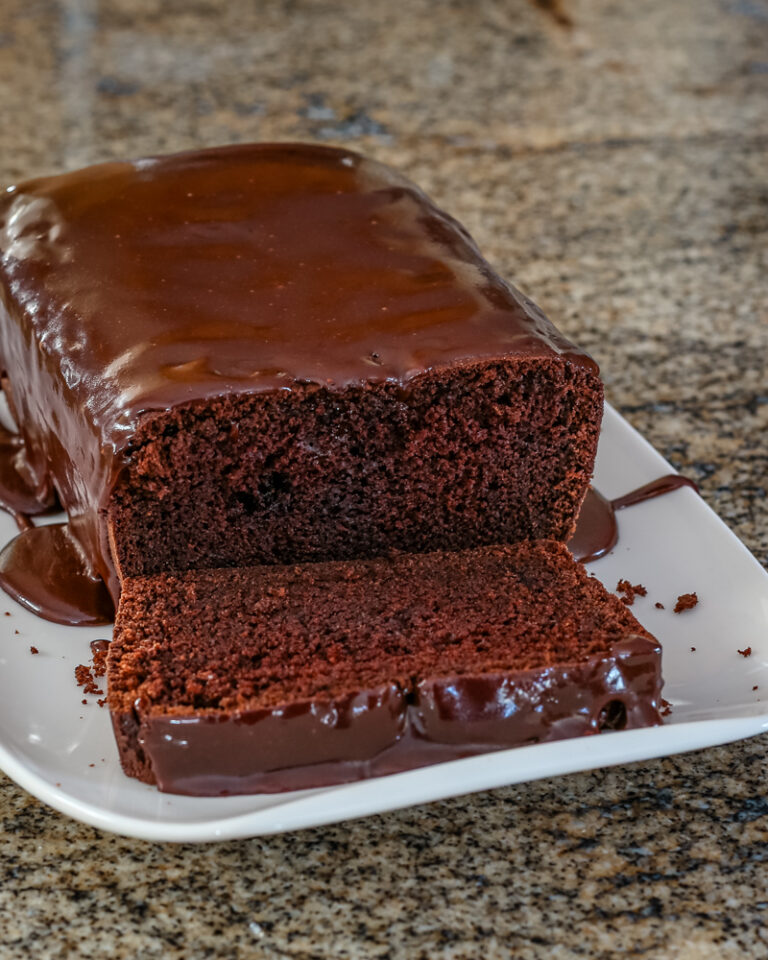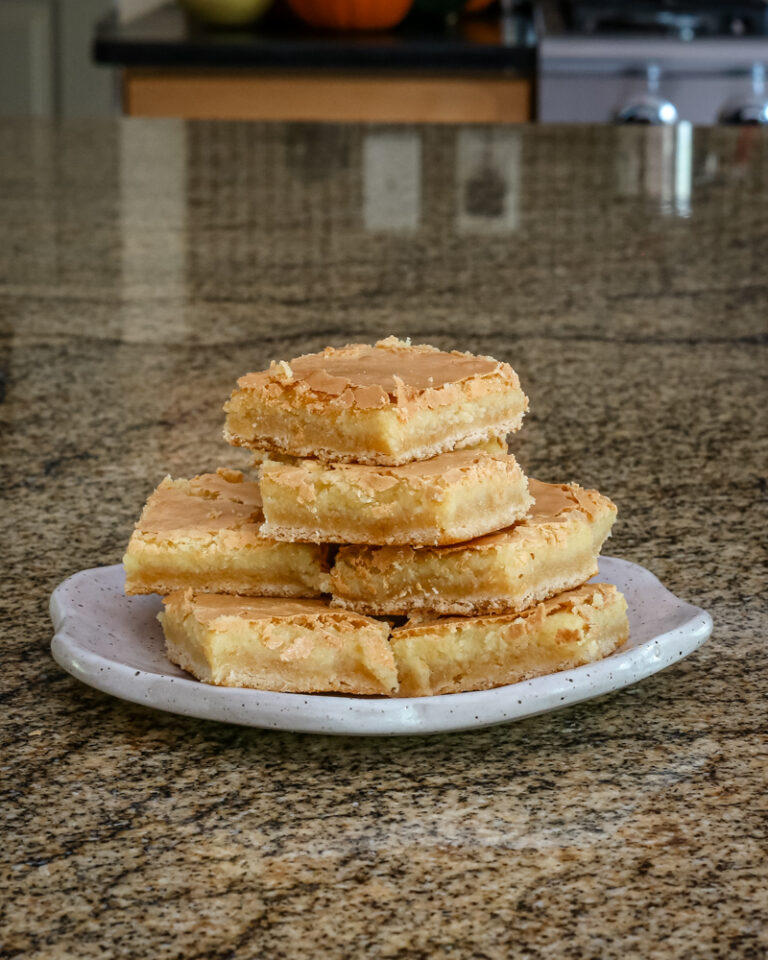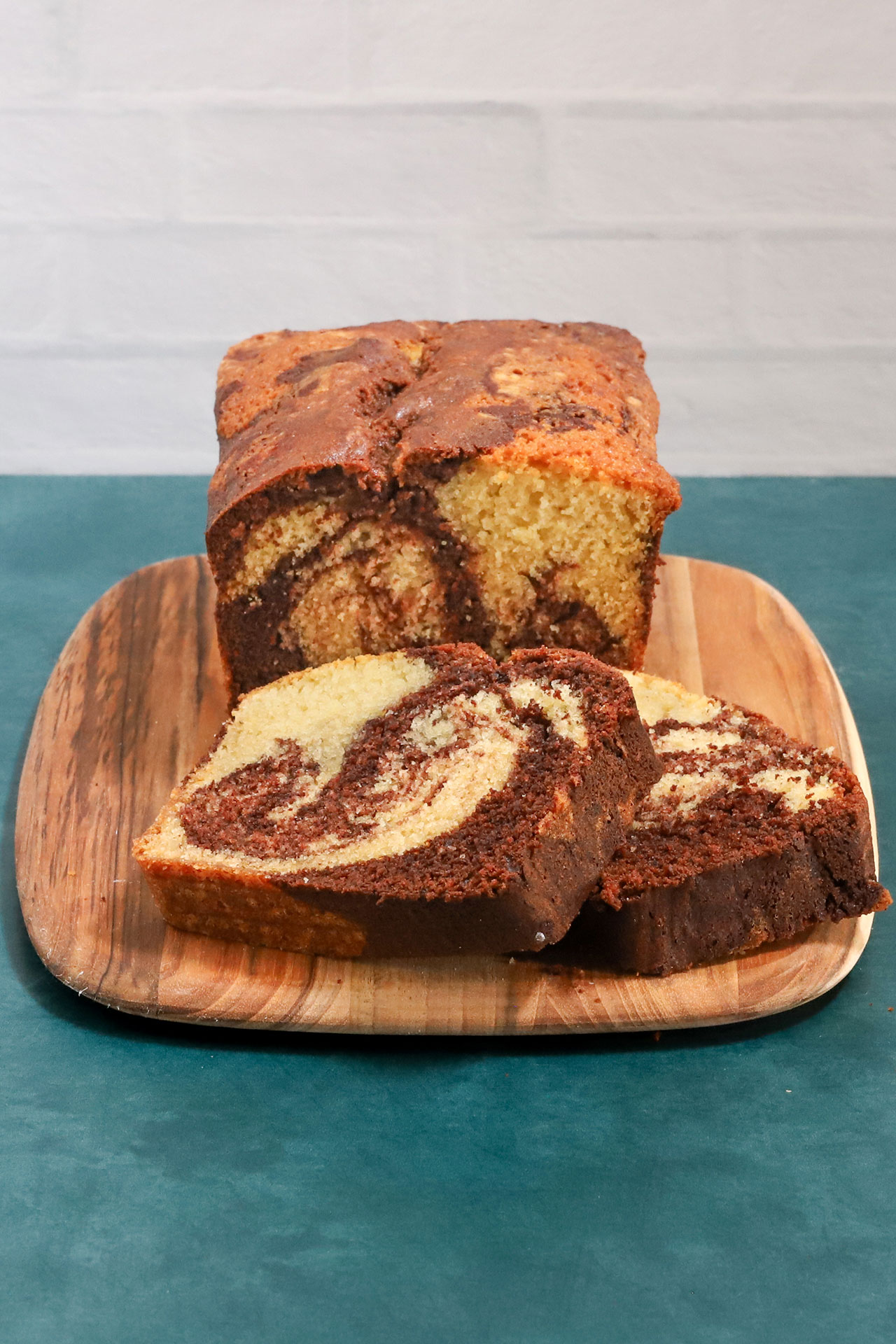Marble Pound Cake
Experience a taste sensation with this marble pound cake. The combination of chocolate and vanilla creates a visual masterpiece.

This marble pound cake brings together two classic flavors—chocolate and vanilla—in the most satisfying way. Baked in a simple loaf pan, it’s one of those cozy, homemade cakes that feels just right for any occasion.
The texture is everything you want in a pound cake: rich, buttery, and tender. The chocolate swirl adds a touch of decadence, while the vanilla keeps it familiar and comforting. It’s sweet, but not too sweet—just enough to let the flavors shine without being overpowering.
And the best part? It’s easy to make. If you’ve got the basics on hand, you’re most of the way there. No fancy techniques—just a few steps and a swirl with a butter knife. Whether you’re baking for company or just craving something a little special, this is the kind of cake that always disappears fast.
What You’ll Like About This Recipe
- Soft, buttery crumb with incredible flavor. Creaming the butter and sugar thoroughly gives this cake its signature fine texture. The combination of vanilla and almond extract adds depth without overshadowing the chocolate swirl.
- Beautiful marbled appearance. Creating the swirl is effortless but looks impressive. Each slice reveals a unique pattern of light and dark batters, making it a showpiece dessert with minimal fuss.
- Dependable loaf-pan bake. This recipe uses a low, slow oven temperature for a moist interior and an even rise, preventing cracked tops or overbaked edges.
- Perfect for any occasion. Serve it for breakfast, dessert, or a coffee break. It’s elegant enough for company yet easy enough for everyday baking.
- Stays moist for days. Thanks to the buttermilk and generous butter content, the cake holds its texture well and improves in flavor as it rests.
Ingredient Notes
- All-purpose flour – Provides structure without making the cake dense. Weighing the flour ensures accuracy; excess flour leads to a dry or tight crumb.
- Unsalted butter – This is the backbone of a classic pound cake. Soften the butter fully so it incorporates air during creaming, creating lift.
- Granulated sugar – Helps lighten the batter during creaming and adds essential moisture.
- Buttermilk – Adds tenderness and a subtle tang that keeps the cake from tasting overly sweet. Shake well before measuring to redistribute the solids.
- Vanilla and almond extracts – Vanilla adds warmth; almond extract adds a bakery-style aroma. Use a light hand with the almond extract—it’s potent.
- Dutch-process cocoa powder – Provides a deep, smooth chocolate flavor. Mixing with hot water “blooms” the cocoa, intensifying the taste and preventing gritty streaks in the marbled batter.
How to Make It
- Prepare the loaf pan and preheat the oven to ensure even baking. Parchment overhangs make it easy to lift the finished cake without sticking.
- Whisk the dry ingredients together to distribute the leavening and salt. This helps the batter blend smoothly without overmixing.
- Cream the butter and sugar thoroughly, scraping the bowl often for an even texture. Proper creaming adds air, which is crucial for the cake’s rise and soft crumb.
- Add the extracts and eggs, one at a time, mixing until each egg is fully incorporated before adding the next. This prevents curdling and helps the batter emulsify.
- Alternate adding the dry ingredients and buttermilk, beginning and ending with the dry mixture. This method keeps the batter smooth and prevents gluten overdevelopment.
- Transfer half the batter to another bowl and fold in the chocolate mixture. The batter should be thick enough to hold distinct swirls.
- Spoon vanilla and chocolate batters into the loaf pan in alternating layers, then swirl gently with a knife. Overmixing will muddy the marbling.
- Bake slowly until the center tests clean, allowing the low temperature to create an even, crack-free top. Cool partially in the pan, then finish cooling on a rack for best texture.
Pro Tips
- Bring all ingredients to room temperature to ensure a smooth, even batter.
- Avoid over-swirling; a few figure-eight motions create the best marbled look.
- Check for doneness early—your oven may run hot at lower temperatures.
- Use a light-colored loaf pan to prevent overbrowning around the edges.
- Cool the cake completely before slicing to prevent crumbling.
Recipe Variations
- Chocolate-chip marble. Fold mini chocolate chips into the vanilla batter for texture and sweetness.
- Orange-almond marble. Add orange zest to the vanilla portion and a splash of orange juice to the chocolate mixture for a fragrant twist.
- Mocha marble. Stir a teaspoon of instant espresso into the chocolate batter to deepen the flavor.
- Cinnamon swirl. Replace cocoa with a mixture of cinnamon and brown sugar for a warm, spiced loaf.
- Double chocolate version. Drizzle melted chocolate into the pan along with the batter for extra ribbons of chocolate.
Some Fun Ways to Use Pound Cake
- Grilled: Slice the pound cake and lightly butter each side. Grill it in a hot skillet or grill pan browned. Serve with a scoop of ice cream for a warm treat.
- French Toast: Dip slices of pound cake into an egg, milk, and vanilla custard mixture and cook them like French toast. Serve with syrup, whipped cream, or ice cream topping.
- Trifle: Cut the pound cake into cubes and layer in a glass bowl with layers of pudding or whipped cream and diced fruit or berries.
- Pound Cake Croutons: Cut the pound cake into small cubes and toast them in the oven. Sprinkle the croutons on fruit salads, ice cream, or desserts.
How to Store
- Refrigerate the fully cooled cake tightly wrapped for up to 5 days. The flavor deepens after the first day.
- Freeze whole or sliced portions for up to 2 months; wrap well to prevent drying.
- Refresh individual slices in the microwave for a few seconds or warm briefly in a low oven to restore softness.
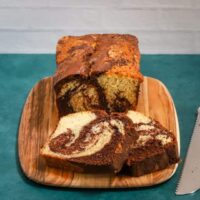
Marble Pound Cake
Ingredients
- 2 cups all-purpose flour, 255 grams
- 1/2 teaspoon baking soda
- 1/4 teaspoon sea salt, fine
- 2 sticks, 227 grams unsalted butter (softened)
- 1 1/2 cups granulated sugar, 300 grams
- 3 large eggs, room temperature
- 1/2 cup buttermilk, well shaken
- 1 1 /2 teaspoons pure vanilla extract
- 1/4 teaspoon almond extract
For the Chocolate Batter
- 3 tablespoons Dutch process cocoa powder
- 3 tablespoons hot water
Instructions
- Spray an 8 1/2-by-4 1/2-inch loaf pan with cooking spray and line it with parchment paper, leaving an overhang. Heat the oven to 300 F.
- Combine the flour, salt, and soda in a bowl and whisk to blend; set aside.
- In a mixing bowl with an electric mixer, beat the butter and sugar together for 4 to 5 minutes or until light in color and fluffy. Scrape the sides of the bowl occasionally. A stand mixer is easiest, but you can use a handheld mixer.
- Add the vanilla and almond extract and beat just to blend. Add the eggs, one at a time, beating each one until thoroughly incorporated into the batter.
- Add 1/3 of the flour mixture and half of the buttermilk and beat until blended. Repeat with another 1/3 of the flour mixture and remaining buttermilk, then beat in the remaining flour mixture.
- Transfer about half of the batter to a medium bowl. Combine the Dutch cocoa powder and hot water and whisk until smooth. Fold the chocolate mixture into the medium bowl of batter.
- Spoon both batters into the pan, alternating between colors. Use a knife or spatula to swirl the batter to make a marble pattern.
- Bake the cake for 1 hour and 5 minutes to 1 hour and 15 minutes or until a cake tester or toothpick inserted into the center comes out with just a few crumbs clinging to it.
- Cool in the pan on a cooling rack for 20 minutes, then turn the cake out onto the cooling rack to cool completely.
- Slice and serve. Enjoy!
Nutrition
Disclaimer:
Our nutritional information is based on a third-party application that analyzes the ingredients list to determine the values. The information is meant to be helpful, but should be considered an estimate. Values may differ depending on measurements, brands, serving variations, and database availability.




